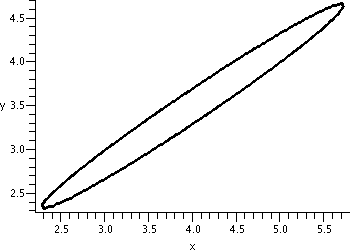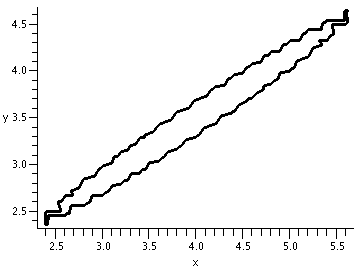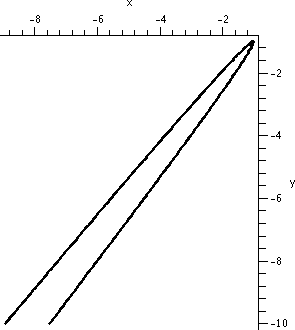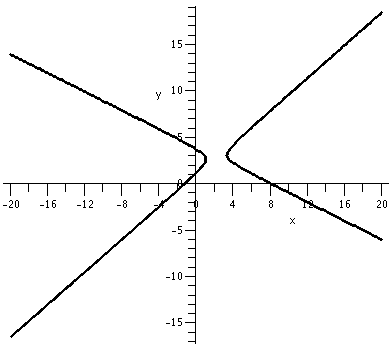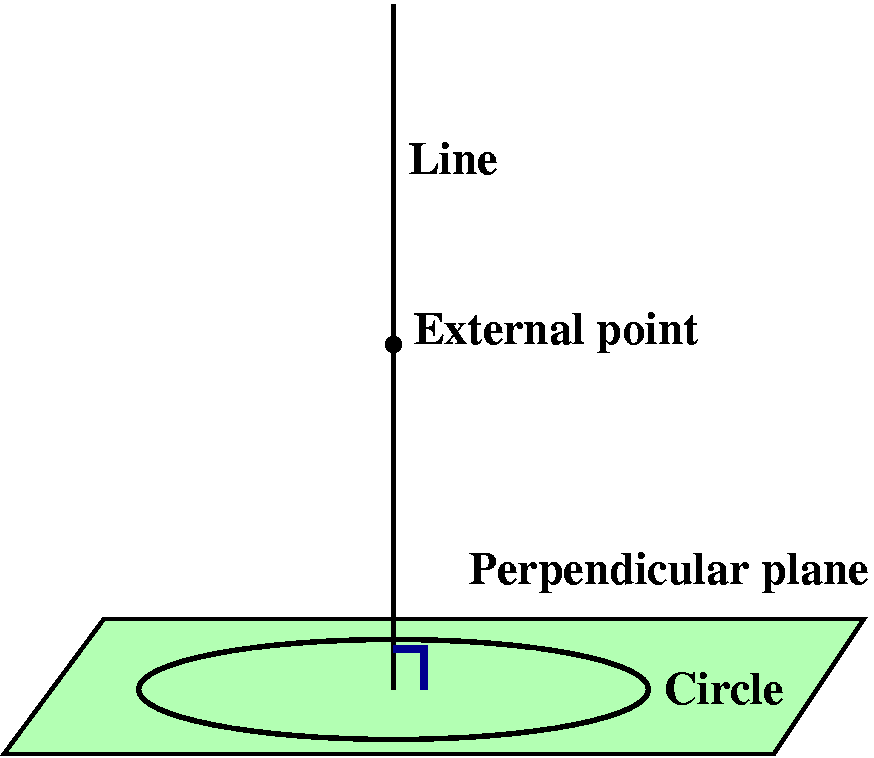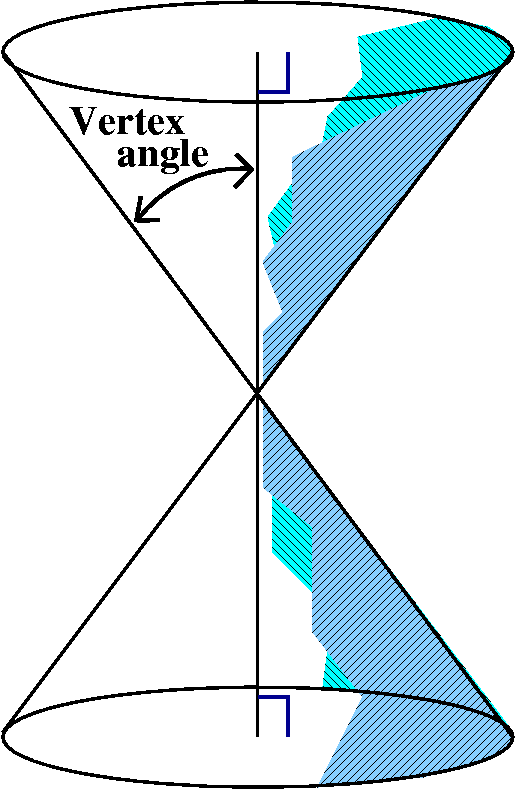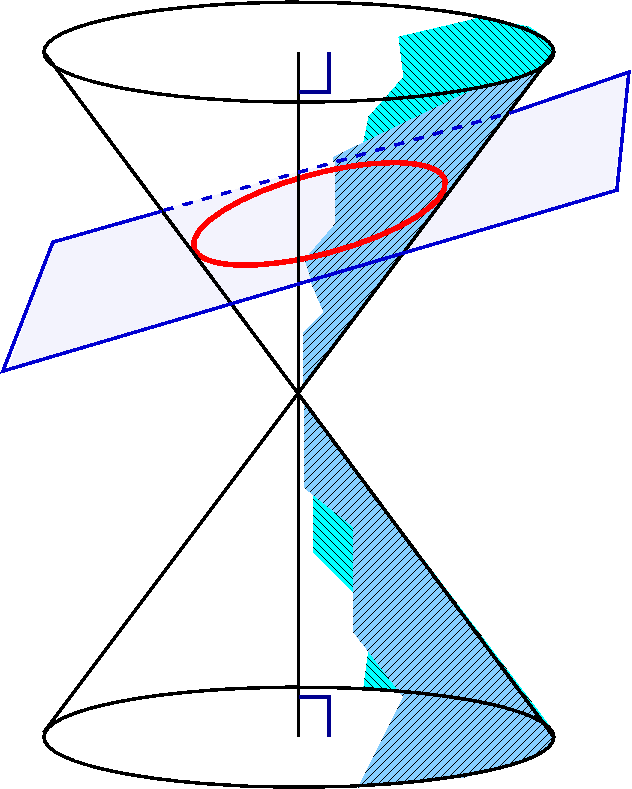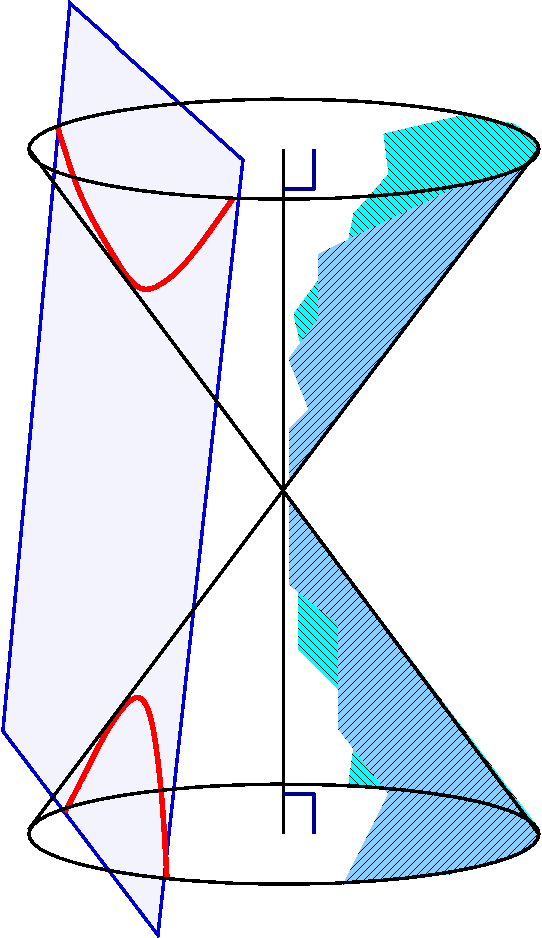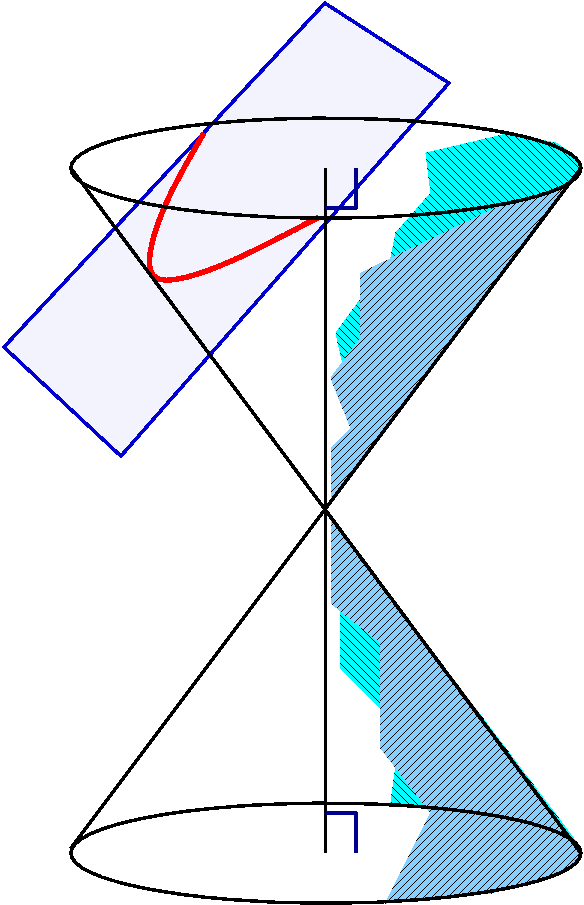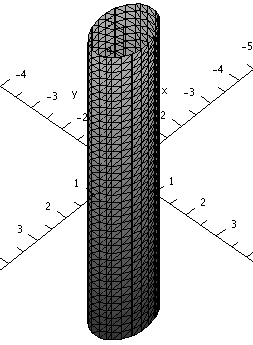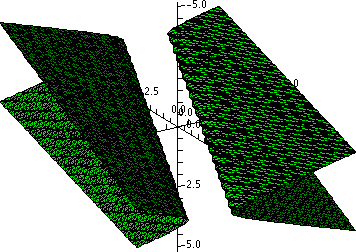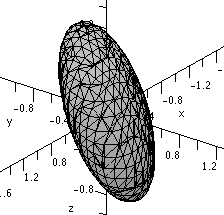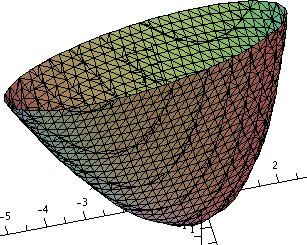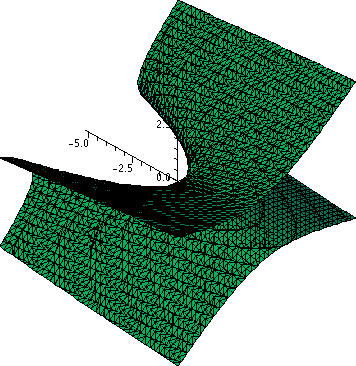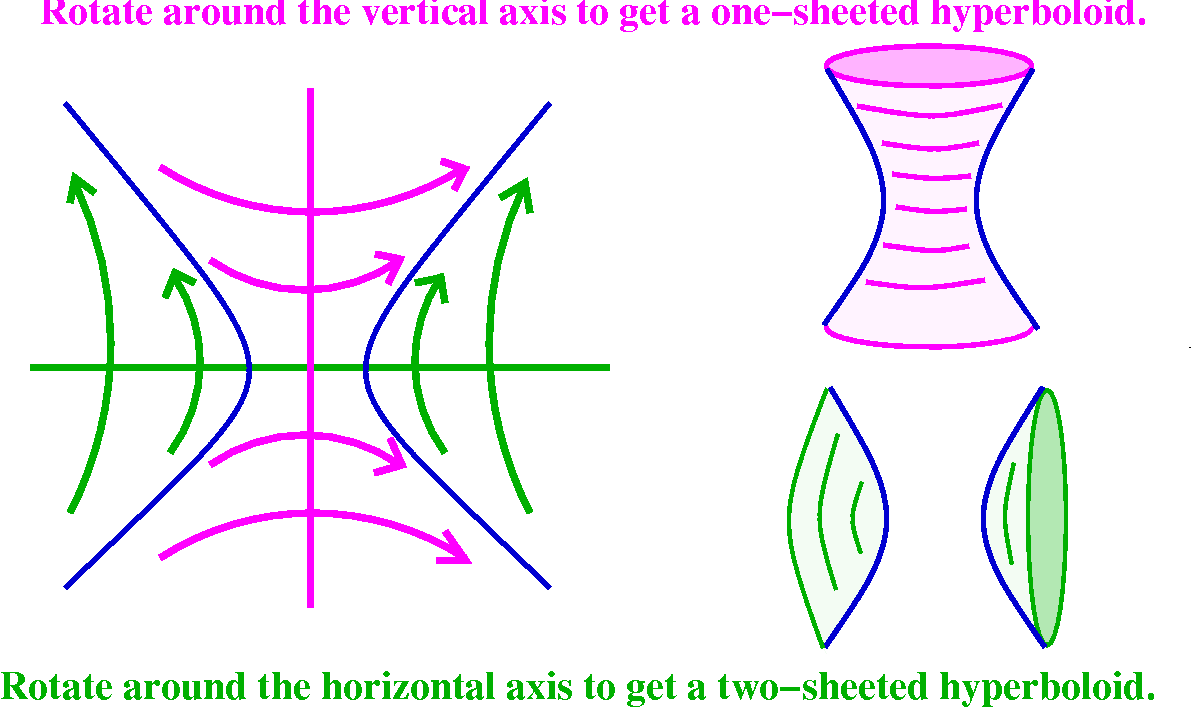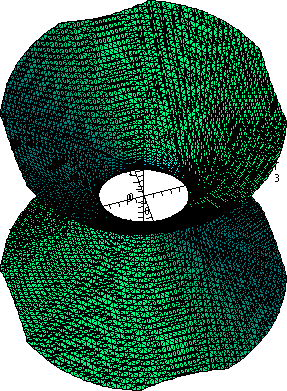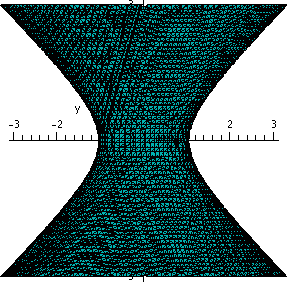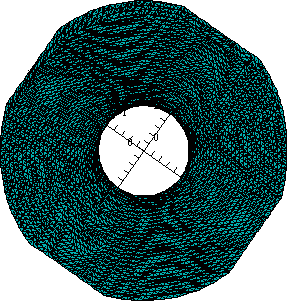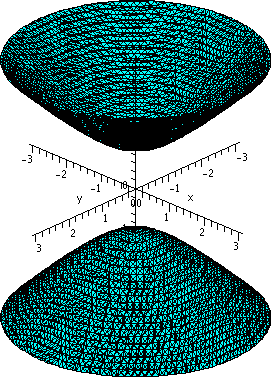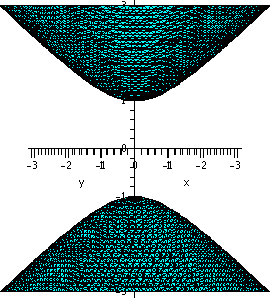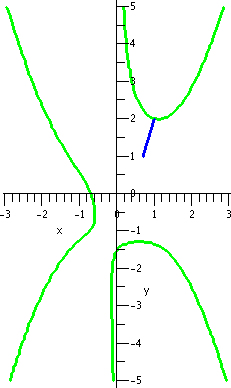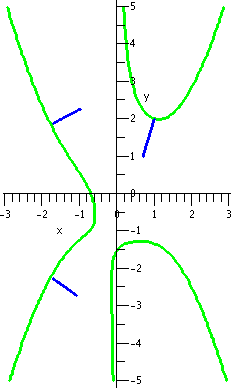> subs({x=1,y=0,z=0},F);
1
|
|
Here I'm "plugging" in values for F's variables, and verifying that
F(1,0,0)=1, so that (1,0,0) is on the surface defined by F(x,y,z)=1.
|
> Fx:=diff(F,x);
2
Fx := 3 x + 5 z
> Fy:=diff(F,y);
2
Fy := -3 y + 1
> Fz:=diff(F,z);
Fz := 5 x
> subs({x=1,y=0,z=0},Fx);
3
> subs({x=1,y=0,z=0},Fy);
1
> subs({x=1,y=0,z=0},Fz);
5
> T:=spacecurve(<3*t+1,1*t,5*t>,t=0..(.3),color=blue,thickness=3,
axes=normal);
|
|
|
Here are computations of partial derivatives, and evaluations of the
partial derivatives. The gradient of F at (1,0,0) is (3,1,5), so that
the spacecurve command draws a short line segment starting at
(1,0,0) in the direction of the gradient vector.
|
> S:=implicitplot3d(F, x=-2..2, y=-2..2, z=-2..2, axes=normal, labels=[x,y,z],
grid=[50,50,50], color=red);
> display({S,T}};
|
|
|
The implicitplot3d command draws the surface. Specifying that
grid=[50,50,50] means that we should get a better picture
than the default, but Maple must check 503=125,000
points in R3 and this command took about 2 seconds on my
home PC.
Below is the picture that resulted from displaying the normal vector
and the piece of the surface together.
|
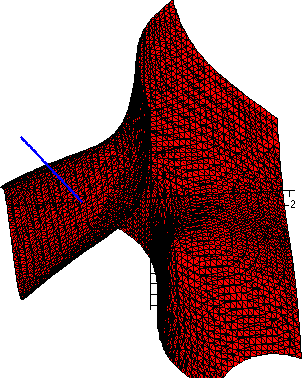 |
|
|
What if I wanted to find the normal vector for some point that isn't
as "nice" as (1,0,0)? Suppose I changed x, say, from 1 to .95, and z
from 0 to -.15. What y values could I get? Here's one way to have
Maple approximate the answers.
|
> fsolve(subs({x=.95,z=-.15},F=1));
-1.289608097
> Q:={x=.95,y=-1.289608097,z=-.15};
Q := {x = 0.95, z = -0.15, y = -1.289608097}
> subs(Q,F);
1.000000000
> m1:=subs(Q,Fx);m2:=subs(Q,Fy);m3:=subs(Q,Fz);
m1 := 1.9575
m2 := -3.989267132
m3 := 4.75
> T1:=spacecurve(<m1*t+.95,m2*t-1.289608097,m3*t-.15>,t=0..(.3),
color=blue,thickness=3, axes=normal);
> display({S,T,T1}};
|
|
|
The first command, fsolve, asks for numerical solutions of
F(x,y,z)=1 after substitution of the x and z values. The
fsolve command can return more than one answer.
I defined Q so that I would not have to type too much
later. I substituted Q in F so that I could
check fsolve's answer. Generally the answer should check to
within the accuracy of Digits (the default accuracy is 10
decimal places).
Then I used Q and the previously computed partial derivatives
to get the gradient at the new point. The spacecurve command
created a new line segment in the direction <m1,m2,m3>
starting at Q and finally display({S,T,T1}) showed a
neat picture. Two views of the picture are below. In the
left-hand view, I tried to show that the vectors were perpendicular to
the surface: this view is from the side of the vectors.
The other view is an attempt to show "things" in perspective.
|
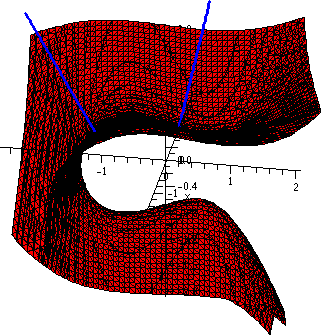
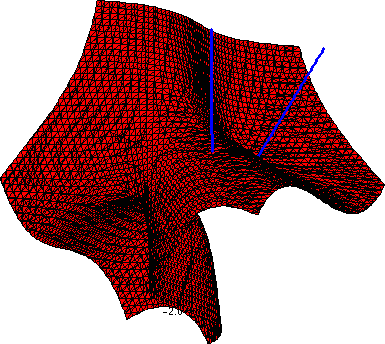
|
|
